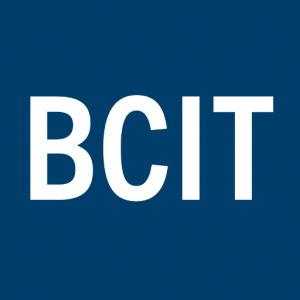[Institutional Update] British Columbia Institute of Technology
Contributed by Bonnie Johnston, BCIT.

BCIT’s Learning and Teaching Centre
I’m an Instructional Development Consultant in the Learning and Teaching Centre at BCIT. There are three main areas of my work: faculty development; program development, review and change; and curriculum and instructional design and development for all delivery and media formats. I am one of eleven in our group who work with our fellow team members in the LTC to support the six Schools at BCIT. Other teams in the LTC are Instructional Materials Developers, Graphic Artists, Media Producers, Multimedia Producers, Educational Technology Support, and Audio Visual Services.
E-learning has a huge role at BCIT and we calibrate our work to the e-learning continuum. We are one of the largest distance learning institutions in the province, and we primarily use the learning management system, Desire to Learn. We are upgrading to D2L Daylight in time for the start of the fall term. We use the web conferencing tool, Blackboard Collaborate and have made it easy for instructors by integrating access via the default course shell.
Like everyone in the post-secondary field, we are experiencing a great interest and uptake in blended/flipped learning. While five or six years ago it was the Learning and Teaching Centre who was starting the conversation in an attempt to spark interest, it is now overwhelmingly our instructors themselves who are pushing forward with redesigning their classroom delivery to incorporate online learning elements.
Along with our site-wide license for ResponseWare’s virtual clickers, our Educational Technology Support team provides the backbone of technical administration and support for these technologies. Instructional Development Consultants provide the teaching and learning design support, as well as facilitating access to our specialized media developers for graphics, video and interactivities. Our Audio Visual team supports instructors with equipment when they want to do it themselves, and they are also currently busy with upgrading BCIT’s learning spaces.
We are continually exploring technologies and processes as they come along, and we try to do so when we can partner with an instructor or a program so that we can learn quickly how feasible something is. For example, in recent years we’ve tried out ebooks but quickly discovered it wasn’t a good fit for the teaching context. However, as with using the LMS, we recently have had a lot of interest and volition to work with e-portfolios. In past years we had explored e-portfolios without much success. This current drive can be attributed to both the programs involved as well as to the improved technology design that has come with time.
The LTC’s mandate is to support the Schools so we get involved with the partnerships that the Schools get involved with. For example, we are supporting the School of Health in two very large, multi-year initiatives. The fully distance-based Speciality Nursing programs were directed to significantly expand their graduates in a compressed time frame. The team is exploring how to find the right balance between online and classroom learning in a shortened learning time. The Bachelor of Science in Nursing program is undergoing a significant curriculum redesign and is using this redesign as an opportunity to integrate blended learning delivery into more than 35 courses. Also, we are partnering with Trades Training BC, the Industry Training Authority, and the 15 public post-secondary trades-teaching institutions on a multiyear project to create performance assessments for the Red Seal Trades available across the province via an online learning repository.
Looking ahead, we are exploring VR/AR, meaningful learning analytics, and we continue to advocate for Open Education. We are also fully committed to our new Learning and Teaching Framework which we use to align all of our initiatives.

